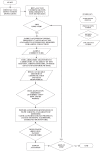The clinical application of beta-lactam antibiotic therapeutic drug monitoring in the critical care setting
- PMID: 37466209
- PMCID: PMC10566322
- DOI: 10.1093/jac/dkad223
The clinical application of beta-lactam antibiotic therapeutic drug monitoring in the critical care setting
Abstract
Critically ill patients have increased variability in beta-lactam antibiotic (beta-lactam) exposure due to alterations in their volume of distribution and elimination. Therapeutic drug monitoring (TDM) of beta-lactams, as a dose optimization and individualization tool, has been recommended to overcome this variability in exposure. Despite its potential benefit, only a few centres worldwide perform beta-lactam TDM. An important reason for the low uptake is that the evidence for clinical benefits of beta-lactam TDM is not well established. TDM also requires the availability of specific infrastructure, knowledge and expertise. Observational studies and systematic reviews have demonstrated that TDM leads to an improvement in achieving target concentrations, a reduction in potentially toxic concentrations and improvement of clinical and microbiological outcomes. However, a small number of randomized controlled trials have not shown a mortality benefit. Opportunities for improved study design are apparent, as existing studies are limited by their inclusion of heterogeneous patient populations, including patients that may not even have infection, small sample size, variability in the types of beta-lactams included, infections caused by highly susceptible bacteria, and varied sampling, analytical and dosing algorithm methods. Here we review the fundamentals of beta-lactam TDM in critically ill patients, the existing clinical evidence and the practical aspects involved in beta-lactam TDM implementation.
© The Author(s) 2023. Published by Oxford University Press on behalf of British Society for Antimicrobial Chemotherapy. All rights reserved. For permissions, please e-mail: journals.permissions@oup.com.
Similar articles
-
Beta-Lactam Antibiotic Therapeutic Drug Monitoring in Critically Ill Patients: A Systematic Review and Meta-Analysis.Clin Infect Dis. 2022 Nov 14;75(10):1848-1860. doi: 10.1093/cid/ciac506. Clin Infect Dis. 2022. PMID: 35731853 Free PMC article.
-
Barriers and Facilitators in the Clinical Implementation of Beta-Lactam Therapeutic Drug Monitoring in Critically Ill Patients: A Critical Review.Ther Drug Monit. 2022 Feb 1;44(1):112-120. doi: 10.1097/FTD.0000000000000937. Ther Drug Monit. 2022. PMID: 34798631 Review.
-
Study protocol for ADAPT-TDM: A beta-lactam antibiotic Dose AdaPtation feasibility randomised controlled Trial using Therapeutic Drug Monitoring.BMJ Open. 2024 Jul 1;14(6):e083635. doi: 10.1136/bmjopen-2023-083635. BMJ Open. 2024. PMID: 38951004 Free PMC article.
-
Assessment of the practical impact of adjusting beta-lactam dosages based on therapeutic drug monitoring in critically ill adult patients: a systematic review and meta-analysis of randomized clinical trials and observational studies.Sci Rep. 2024 Apr 2;14(1):7793. doi: 10.1038/s41598-024-58200-w. Sci Rep. 2024. PMID: 38565898 Free PMC article.
-
Impact of β-lactam antibiotic therapeutic drug monitoring on dose adjustments in critically ill patients undergoing continuous renal replacement therapy.Int J Antimicrob Agents. 2017 May;49(5):589-594. doi: 10.1016/j.ijantimicag.2017.01.009. Epub 2017 Mar 21. Int J Antimicrob Agents. 2017. PMID: 28341612
Cited by
-
Economic impact of individualized antimicrobial dose optimization in the critically ill patient in Spain.Front Pharmacol. 2025 Feb 26;16:1506109. doi: 10.3389/fphar.2025.1506109. eCollection 2025. Front Pharmacol. 2025. PMID: 40078287 Free PMC article.
-
Intra-abdominal infections survival guide: a position statement by the Global Alliance For Infections In Surgery.World J Emerg Surg. 2024 Jun 8;19(1):22. doi: 10.1186/s13017-024-00552-9. World J Emerg Surg. 2024. PMID: 38851700 Free PMC article. Review.
-
Therapeutic Drug Monitoring of Antimicrobial Drugs in Children with Cancer: A New Tool for Personalized Medicine.Paediatr Drugs. 2025 Jan;27(1):41-56. doi: 10.1007/s40272-024-00663-5. Epub 2024 Nov 6. Paediatr Drugs. 2025. PMID: 39503988 Review.
-
Therapeutic drug monitoring (TDM) of β-lactam/β-lactamase inhibitor (BL/BLI) drug combinations: insights from a pharmacometric simulation study.J Antimicrob Chemother. 2025 Jan 3;80(1):79-86. doi: 10.1093/jac/dkae375. J Antimicrob Chemother. 2025. PMID: 39436757 Free PMC article.
-
Drugs with a negative impact on cognitive functions (part 3): antibacterial agents in patients with chronic kidney disease.Clin Kidney J. 2024 Jun 14;17(8):sfae174. doi: 10.1093/ckj/sfae174. eCollection 2024 Aug. Clin Kidney J. 2024. PMID: 39114495 Free PMC article. Review.
References
-
- Craig WA, Ebert SC. Killing and regrowth of bacteria in vitro: a review. Scand J Infect Dis Suppl 1990; 74: 63–70. - PubMed
Publication types
MeSH terms
Substances
LinkOut - more resources
Full Text Sources
Medical


